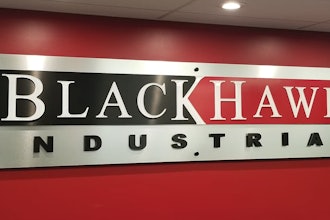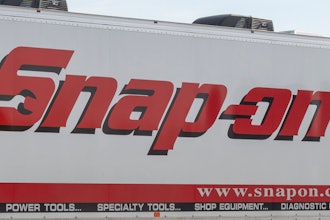"Do you want to work smarter or harder?" This phrase does not
represent a new concept in B2B sales effectiveness, but today's
big data science capabilities add new layers of nuance to
traditional methodologies for beating quota. This Research
Report explores the value of price optimization solutions in
contributing to more efficient customer management
strategies.
PRICE OPTIMIZATION: HOW BEST-IN-
CLASS PERFORMERS ADD TO BOTH THE
TOP AND BOTTOM LINES
August, 2014
Peter Ostrow, VP and Research Group Director;
Customer Management, Sales Effectiveness
Report Highlights
The number one
business goal among
sales leaders is now
"higher margins."
The leading reason
why B2B sales deals
are lost? Pricing.
Best-in-Class
companies offer 30%
more sales rep-level
flexibility, vs. other
firms, in closing
business deals.
Price optimization
users improve
customer retention
by 5.3% annually.
Non-users lose
ground at a 0.6%
rate.
p2 p4 p5 p7
www.aberdeen.com
Price Optimization: How Best-in-Class Performers Add to Both the Top
and Bottom Lines
2
As the end of any typical business-to-business (B2B) selling
cycle approaches, sales reps and managers alike feel the
growing pressure to "do whatever it takes" in order to get deals
done, make the forecast predictions come true, and hit their
individual and group numbers. These imperatives inevitably
motivate the offering of deal sweeteners, pricing discounts,
and enticingly soft terms-and-conditions arrangements as
desperation and nerves set in at month-end. Is this, however,
any way to run a successful modern sales organization? Is there
any alternative?
Times Have Changed: Introducing the 21st Century Sales
Leader
Aberdeen's newest Sales Effectiveness survey covering a
variety of deal-closing technologies and processes is now
revealing results that will be published in the pending "Got
Friction? Workflow Fixes that Shorten the B2B Sales Cycle." One
of the more surprising findings is represented by Figure 1,
which details the top aspirations of the sales leaders and sales
operations practitioners representing the majority of survey
respondents. The unexpected data point here is that the most
significant goal expressed by sales practitioners is to not just
acquire business, but to do so profitably. Traditionally, the sole
focus of sales organizations has been to sell as much product
as possible, e.g. growing top-line revenue and letting
everything else – such as profits – take care of itself. We know
from Aberdeen's Marketing Strategy and Effectiveness research
that marketing teams have, for many years now, been less
accountable for activities (click-throughs, registrants, eyeballs,
downloads) and more for results such as filling the pipeline and
generating measurable revenue from campaigns.
The unexpected data
point here is that the
most significant goal
expressed by sales
practitioners is to not
just acquire business,
but to do so
profitably.
www.aberdeen.com
Price Optimization: How Best-in-Class Performers Add to Both the Top
and Bottom Lines
3
Figure 1: Business Goals of Contemporary Sales Leaders:
Focusing on Margin, Talent, Speed
Source: Aberdeen Group, August 2014
On the sales side of the house, however, this sense of return-
on-investment as represented in Figure 1 is the first time that
our Sales Effectiveness research has revealed any significant
sales leadership attention on running their part of the
business… like a business.
Taking such ownership of a profit-and-loss mentality in sales
management is a big-picture attribute of the most successful
sales organizations, as we will shortly see. The additional top
goals in Figure 1 add to this more holistic approach toward
enabling more agile and successful front-line sellers as well.
Aberdeen research consistently shows that companies
providing faster, stronger sales training and aggressive
customer experience management strategies inevitably win
more deals and do so at better margins.
Prices and Discounts and Margins, Oh My!
Now that sales leaders are apparently seeing the light
regarding the need to focus on more than just the top line, how
44% 42% 40%
37% 36% 35%
31%
0%
10%
20%
30%
40%
50%
Higher
margins
More
educated
sales force
Faster sales
on-boarding
Improved
customer
satisfaction
Faster
response
to sales
leads
Faster
response
to customer
inquiries
Improved ability
to defend
against
competitors
Pe
rc
en
ta
ge
o
f R
es
po
nd
en
ts
n = 143
All companies
Taking such
ownership of a profit-
and-loss mentality in
sales management is a
big-picture attribute
of the most successful
sales organizations.
www.aberdeen.com
Price Optimization: How Best-in-Class Performers Add to Both the Top
and Bottom Lines
4
does this new sensitivity toward margin jibe with the never-
ending pressure to get deals done and make their number? If
sales totals threatened to come up short this month, isn't it
better to hit quota at a thinner margin level, remain a sales rep
or sales team in good standing, and let the back-office folks
take care of the rest? Aberdeen's research findings would
indicate that the answer is no… and yes. As we will see below,
sales organizations that react emotionally to the pressure of
unclosed deals by throwing random price discounts at their
prospects or customers perform poorly. On the other hand,
sales operations practitioners who accept pricing flexibility as a
reality of doing business, and then support this new normal
with "working smarter, not harder," data-driven decision-
making, create win-win-win results for sellers, bean-counters,
and customers.
The first step taken by these wise sales practitioners is to
understand the playing field on which their team competes.
Aberdeen's survey asked end-users, "When your sales team
loses a deal, what are the top two reasons why?" and the
results, in Figure 2, tell an interesting story. Here, we see that
the two dominant barriers to sales success represent both
highly quantifiable and seemingly subjective rationales for
losing deals: sellers are unable to compete with a lower,
competitor-offered price, but just as significantly they fail to
grasp the subtleties and nuances of their target companies that
influence the selection of the ultimate winning provider. This
finding reveals a conundrum facing sales leaders who try to
optimize the chances for their reps to succeed. It is far easier to
allow desperate, under-their-number sellers to reduce price in
real time, than to retroactively teach them better prospecting
and body language-reading skills.
If sales totals
threatened to come up
short this month, isn't
it better to hit quota
at a thinner margin
level, remain a sales
rep or sales team in
good standing, and let
the back-office folks
take care of the rest?
www.aberdeen.com
Price Optimization: How Best-in-Class Performers Add to Both the Top
and Bottom Lines
5
Figure 2: Why Sales Deals Are Lost: Money and Politics are
Intrinsically Intertwined
Source: Aberdeen Group, August 2014
But is it wiser? When we divide all of the Aberdeen research
survey respondents into high performers and not-so-good sales
organizations, we see in Figure 3 that Best-in-Class companies
(sidebar) are far more likely to respond with high values to "as
the end of your typical sales cycle approaches, how much
flexibility does your company provide to sellers in order to get
deals 'over the finish line'?" This finding would initially seem to
imply that a long discounting leash is a wise sales enablement
tool, with Best-in-Class companies supporting 30% more (90%
vs. 69%) rep-level independence near month-or quarter-end,
because the natural path of least resistance for any
salesperson trying to close a deal is to lower the price.
Flexibility, however, is a concept that applies to alternative
methods of influencing a deal decision – payment terms,
delivery options, service agreements, or commitments to
providing customer referrals – than merely adjusting the per-
unit cost of goods sold when under pressure. Indeed, while we
49% 48%
21% 20% 19%
0%
10%
20%
30%
40%
50%
Price Failure to diagnose,
control internal politics
in buyer’s organization
Overly complex
deal structure
Competitive
products
are better
Lack of knowledge
about customer’s
purchasing history
Pe
rc
en
ta
ge
o
f R
es
po
nd
en
ts
n = 143
All companies
The Lead-to-Win Best-in-Class Defined
In June through July 2014, Aberdeen
surveyed 143 end-user organizations to
understand their sales best practices. The
performance metrics used to define the
Best-in-Class (top 20%), Industry Average
(middle 50%), and Laggard (bottom 30%)
among these sales teams are:
• 84% of sales reps achieving quota, vs.
54% among Industry Average and 18% for
Laggard firms
• 17.9% average year-over-year increase in
total company revenue, vs. 7.4% for the
Industry Average and no change among
Laggard respondents
• 6.6% average year-over-year increase in
lead conversion rate, vs. 1.4% and 0.3%
decreases for Industry Average and
Laggard respondents
www.aberdeen.com
Price Optimization: How Best-in-Class Performers Add to Both the Top
and Bottom Lines
6
have seen that pricing is the leading reason why deals are lost,
discounting is actually not a predominant contributor toward
deals that are won.
Figure 3: Should B2B Sellers Be Provided End-of-Cycle Flexibility?
Source: Aberdeen Group, August 2014
In Figure 4, we see that Best-in-Class companies are 35% more
likely than under-performers to have offered a discount in
supporting a winning sales opportunity, but in fact, this data
also shows that 63% of the time, top performers do not utilize a
discount to win the deal. At first glance, these two findings
seem contradictory, but this is where the deployment of price
optimization solutions becomes relevant. In other words, there
is a time and place for pricing flexibility and discounting, but
leaving the selection of when and how to do so requires a data-
driven approach rather than catering to the emotions of an
individual sales rep falling short on their number.
40%
50%
10%
16%
53%
31%
0%
15%
30%
45%
60%
Extremely
flexible
Very
flexible
Very or
completely
inflexible
Pe
rc
en
ta
ge
o
f R
es
po
nd
en
ts
n = 143
Best-in-Class All Others
www.aberdeen.com
Price Optimization: How Best-in-Class Performers Add to Both the Top
and Bottom Lines
7
Figure 4: Is Sales Discounting OK?
Source: Aberdeen Group, August 2014
Price Optimization: Finding a Data-Driven Middle Ground
So, if companies are losing sales deals because of pricing and
politics, but not winning them with discounts, how do Best-in-
Class firms achieve their superior results with more targeted
discounting strategies? The answer lies deep in the research
data, which reveals that 24% of top performers indicate that
they are planning to increase their investments in price
optimization technology solutions in the coming 12 months,
compared with only 3% indicating a planned reduction. These
products are relatively new to the B2B marketplace, although
as consumers, most of us have, for years, unknowingly
purchased airline seats, hotel rooms, and cruise ship cabins
under the influence of price optimization tools. Today,
however, providers of enterprise goods and services are
deploying this technology with compelling business results –
Figure 5.
36.8%
27.2%
20%
25%
30%
35%
40%
When your sales team wins a
deal, what percentage of the
time was a price discount offered?
Pe
rc
en
t
n = 143
Best-in-Class All Others
It is far easier to allow
a desperate, under-
their-number seller to
reduce price in real
time, than to
retroactively teach
them better
prospecting and body
language-reading
skills. But is it wiser?
www.aberdeen.com
Price Optimization: How Best-in-Class Performers Add to Both the Top
and Bottom Lines
8
Figure 5: Annualized Performance Improvements Achieved
by Price Optimization Users
Source: Aberdeen Group, August 2014
So how do price optimization solutions actually work?
Providers of these technologies generally have extensive
experience in the hospitality industry scenarios like those
described above, but today are extending their reach into the
B2B space. We know from Aberdeen's Big Data for Sales: Are We
Ready? (March 2014) that the emergence of "big data"
utilization across virtually every line-of-business sector is still in
an early adoption phase among sales leaders, but nevertheless,
this research shows Best-in-Class firms deploying "predictive
analytics for sales forecasting" at three-times the rate of
Industry Average and Laggard firms (27% vs. 9%). What this
means for the price optimization space is simple but elegant: if
we have a more concrete and data-enriched understanding of
what sales tactics, messages, content, and of course prices
have been successful in the past, we can far more accurately
predict which of the same variables will help us win deals – at
acceptable margins – in our current and future opportunity
pursuits. Price optimization tools are utilized to impact both
the top and bottom line, by enabling sales leaders and also
individual contributors to know where to draw the line on
11.2%
5.5% 5.3%
4.2%
7.5%
1.6%
-0.6% -0.2%-2.0%
0.0%
2.0%
4.0%
6.0%
8.0%
10.0%
12.0%
Annual
corporate
revenue
Reduction of errors
in contract /
proposal
generation
Customer
renewal
rate
Lead
conversion
rate
Ye
ar
-o
ve
r-y
ea
r
ch
an
ge
n = 143
Price Optimization Users All Others
There is a time and place for pricing
flexibility and discounting, but
leaving the selection of when and
how to do so requires a data-driven
approach rather than catering to
the emotions of an individual sales
rep falling short on their number.
www.aberdeen.com
Price Optimization: How Best-in-Class Performers Add to Both the Top
and Bottom Lines
9
discounting, far before the stress-filled last few days of the
month create a tense, fire-fighting sales culture. As a result,
adopters of this technology stack not only perform better from
a metrics point of view, but also demonstrate in Figure 6 a
superior level of sales speed and competence:
Figure 6: Better Business Results, Stronger Sales
Competencies
Source: Aberdeen Group, August 2014
Few of us truly enjoy receiving a request-for-proposal
(RFP) from the procurement office of our target
account. After all, we noted in Figure 2 above that sales
deals are lost just as frequently due to lack of political
insight as they are over price, and most RFP scenarios
tend to diminish a seller's ability to work through their
personal connections or use their sparkling personality
to influence sales outcomes. Aberdeen's Reducing
Friction in the Sales Cycle: Best Practices in Sales
Contract Management (October 2013) showcases how
72%
55% 52%
48% 45%
50%
42% 40%
22%
17%
0%
15%
30%
45%
60%
75%
Rapidly, effectively
responding to RFP’s
Generating
complex
quotes in a
timely manner
Managing pricing by
exception: automated
"guardrails," triggers
On-boarding,
training new
salespeople
Avoiding “no-
decision” sales
losses
Pe
rc
en
t i
nd
ic
at
in
g
4/
5
on
1
-5
s
ca
le
n = 143
Price Optimization Users All Others
Price optimization tools are utilized
to impact both the top and bottom
line, by enabling sales leaders and
also individual contributors to
know where to draw the line on
discounting, far before the stress-
filled last few days of the month
create a tense, fire-fighting sales
culture.
www.aberdeen.com
Price Optimization: How Best-in-Class Performers Add to Both the Top
and Bottom Lines
10
Best-in-Class companies rapidly and effectively
respond to RFP's using both technology platforms as
well as prospecting best practices to understand both
the human and data-driven influences on buyers'
behavior. Price optimization users replicate this skill set
by leveraging pricing templates, processes, and
automated analysis of historical transactional data to
take the emotional stress and pricing unknowns out of
RFP response activities.
Price optimization users report a 31% higher
competency level (55% vs. 42%) than non-adopters
around rapid complex sales quote development. We
know from Configure-Price-Quote: Best-in-Class
Deployments that Speed the Sale (July 2013) – another
research report title specifically focused on getting sales
deals closed more rapidly and shrinking the enterprise
sales cycle – that automating the process of formal
quote development is a hallmark of top-performing
sales organizations. Enabling your sales team with
templates to negotiate with their prospect or customer
is enhanced by price optimization solutions that
empower sellers with real-time market data and
competitive intelligence that help them choose, as
indicated above, the right time and place to yield on
pricing pressure. As Kenny Rogers would say, "you've
got to know when to hold 'em, and when to fold 'em."
Automated exception pricing is another hallmark of
price optimization users providing them with the
strategic selling advantage. Let's face it: plenty of
goods, and especially professional services, are initially
priced by product marketers with a tacit understanding
that discounting is a reality of contemporary B2B selling
As Kenny Rogers
would say, "you've
got to know when to
hold 'em, and when to
fold 'em."
www.aberdeen.com
Price Optimization: How Best-in-Class Performers Add to Both the Top
and Bottom Lines
11
environments. We have seen above that Best-in-Class
sales leaders offer their team members plenty of
flexibility – sometimes, but not always, in terms of
discounting – and the data shows them to be more than
twice as likely as All Others (70% vs. 34%) to deploy
automated "guardrails" that permit certain percentages
of allowed rep-level discounting, supported by triggers
and red flags that pop up for management to address
when those limits are exceeded.
In Figure 1 above, a top-three sales business goal was
faster sales rep onboarding. Companies deploying
price optimization solutions report more than twice the
competency level (48% vs. 22%) compared with non-
users; this is because the solution enables reps to more
quickly ramp-up their selling skills and product
knowledge, without having to develop their own
anecdotal understanding of how to effectively price
their goods and services. Instead, they benefit from the
company's historical understanding of how to inform
future pricing decisions. Considering Aberdeen's
research findings that B2B sales people typically cost
over $29,000 and take more than seven months to
replace with a fully productive contributor, price
optimization proves its worth as another crucial
element in controlling enterprise sales cycles.
Conclusion and Recommendations
Ultimately, the ability for any enterprise sales organization to
quote, price, and sell effectively is determined by the right mix
of people, process, and technology. Price optimization tools
leverage an organization's vast opportunity to collect, analyze,
and leverage their big data around the entire customer
acquisition and retention lifecycle. When they take advantage
Times have certainly changed for
B2B sales, considering that ROI and
margin are suddenly of concern to
leaders formerly expected to simply
push more product out, and more
deals over the goal line, regardless
of the related expense.
www.aberdeen.com
Price Optimization: How Best-in-Class Performers Add to Both the Top
and Bottom Lines
12
of this knowledge to better predict how individual sales deals
will play out, and scale this talent to an enterprise-wide level,
price optimization users win at every stage of the customer
experience – Figure 7.
Figure 7: Advanced Analytics Impact Every Moment in the
Customer Experience
Source: Aberdeen Group, August 2014
Times have certainly changed for B2B sales, considering that
ROI and margin are suddenly of concern to leaders formerly
expected to simply push more product out, and more deals
over the goal line, regardless of the related expense.
Converting and closing more leads, controlling the sales cycle,
enabling more successful individual contributors, and certainly
retaining more customers ‒these are enviable Best-in-Class
attributes that price optimization users are enjoying with data-
driven, scientific approaches to modern selling.
22%
41%
61%
88%
14%
38%
59%
77%
10%
30%
50%
70%
90%
Lead
conversion
rate
Lead
acceptance
rate
Reps
achieving
quota
Customer
retention
Pe
rc
en
ta
ge
o
f A
tt
ai
nm
en
t
n = 261
Big data/analytics applied to deal velocity All others
If we have a more concrete and
data-enriched understanding of
what sales tactics, messages,
content, and of course prices have
been successful in the past, we can
far more accurately predict which
of the same variables will help us
win deals – at acceptable margins –
in our current and future
opportunity pursuits.
www.aberdeen.com
Price Optimization: How Best-in-Class Performers Add to Both the Top
and Bottom Lines
13
For more information on this or other research topics, please visit www.aberdeen.com.
Related Research
Would You Fire a High-Performing Sales Jerk?;
July 2014
The 21st Century Buying Experience: Say Farewell
to the Sales Cycle; July 2014
It’s a Marathon, Not a Sprint: Best-in-Class B2B
Sales Training for an Ever-Changing Market; June
2014
Gamification in B2B Sales: Is it Time?; April 2014
You Win Some, You Lose Some: How Best-in-Class
Sales Leaders Learn as They Go; April 2014
Incenting Success: Best-In-Class Sales
Management; April 2014
Sales and Marketing Alignment: A Primer on
Successful Collaboration; March 2014
Big Data for Sales: Are We Ready? ; March 2014
Sales Enablement Technologies: Some Things
Old, Some Things New; March 2014
No More Spaghetti against the Wall: How Best-in-
Class Sellers Use Social Relationships to Build a
Better Pipeline; February 2014
Mobile Sales Enablement: Fulfilling the Promise of
Untethered Selling; February 2014
Enterprise Social Collaboration: Best Practices for
the Connected Sales Team; January 2014
Beyond the Quota: Best-in-Class Deployments of
Sales Performance Management; January 2014
Making the Most of Your CRM: How Best-in-Class
Sales Teams Maximize Revenue and Customer
Experience; June 2013
Author: Peter Ostrow, VP/Research Group Director; Customer Management, Sales Effectiveness
[email protected])
About Aberdeen Group
Aberdeen Group conducts research focused on helping business leaders across sixteen different B2B technology
disciplines improve their performance.
Our process is simple – we conduct thousands of surveys every year to identify top performing organizations and
uncover what makes them different. We share these insights back with the market in the form of in-depth research
reports and content assets to help our readers build business plans capable of driving better results with the right
set of tools to help them get there.
This document is the result of primary research performed by Aberdeen Group. Aberdeen Group's methodologies
provide for objective fact-based research and represent the best analysis available at the time of publication. Unless
otherwise noted, the entire contents of this publication are copyrighted by Aberdeen Group, Inc. and may not be
reproduced, distributed, archived, or transmitted in any form or by any means without prior written consent by
Aberdeen Group, Inc.
Price Optimization: How Best-In-Class Performers Add To Both The Top And Bottom Lines
This Research Report explores the value of price optimization solutions in contributing to more efficient customer management strategies.
Latest in Home






















